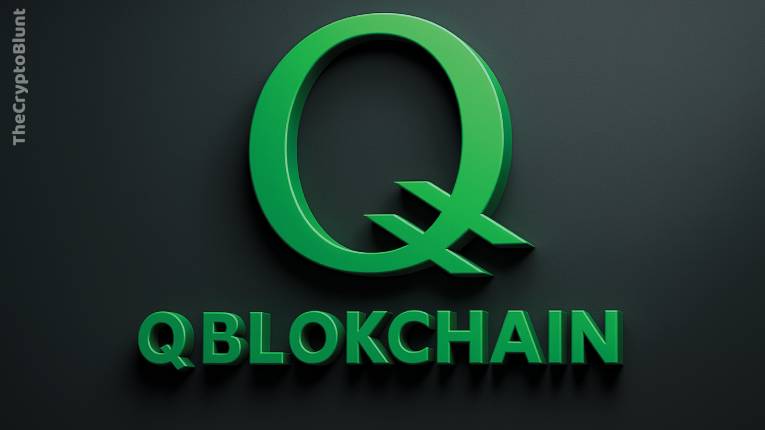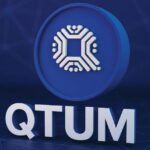This is where the Q Blockchain (often referred to as Q Protocol) steps in. Unlike many blockchains that focus solely on transaction speed or cost, Q Blockchain is primarily designed as a decentralized governance layer for Web3. It’s an independent blockchain built on Ethereum technology, but with a foundational focus on creating a robust, transparent, and enforceable framework for decentralized decision-making. Think of it not just as a new digital road, but as the blueprint for how communities and applications can govern themselves on that road, ensuring fairness and long-term stability.
This comprehensive article will guide absolute beginners through the Q Blockchain Ecosystem. We’ll start by reviewing the fundamental concepts of cryptocurrency and blockchain, then dive deep into Q’s unique approach to governance, its technical underpinnings, the role of its native QGOV token, and the real-world problems it aims to solve. My goal is to equip you with a clear, no-nonsense understanding of why Q Blockchain is a significant player in the evolving landscape of Web3.
Your Foundational Knowledge: Revisiting Core Blockchain Concepts
To truly appreciate the innovative aspects of Q Blockchain, we must first establish a clear understanding of the foundational principles that underpin all blockchain technology. These are the bedrock upon which every innovation in the decentralized space, including Q’s governance model, is built.
1. Cryptocurrency: The Digital Evolution of Value
At its heart, a cryptocurrency is a form of digital money that relies on advanced cryptography for its security and integrity. Unlike the traditional money managed by banks and governments, cryptocurrencies operate on decentralized networks. This means transactions happen directly between users (peer-to-peer), and the system is maintained by a global network of computers rather than a single central authority. The native token that fuels the Q Blockchain ecosystem is QGOV.
2. Blockchain: The Immutable Digital Ledger
Imagine a shared, constantly growing, and incorruptible digital record book. This is a blockchain. It records every transaction or data entry in “blocks,” which are then chronologically and cryptographically linked together.
- Blocks: Collections of validated transactions.
- Chain: Each new block contains a unique cryptographic fingerprint (a “hash”) of the previous block. This linking creates an unbroken, tamper-proof chain. Any attempt to alter an old block would change its hash, breaking the chain and immediately alerting the entire network to the manipulation.
- Immutability: Once a block is added and verified, the information within it cannot be changed. This immutability is the source of blockchain’s immense security, transparency (for public blockchains), and resistance to censorship.
Q Blockchain is an independent Layer 1 blockchain, meaning it is its own standalone network, benefiting from its own security mechanisms.
3. Decentralization: Distributing Power, Enhancing Resilience
Decentralization is the defining characteristic and philosophical core of blockchain technology. It means that control and decision-making are spread across a network of participants rather than being concentrated in a single central entity (like a corporation, government, or a single server).
Why is this crucial?
- Resilience: A decentralized network is inherently more robust. If one part fails, the rest continues to operate, eliminating single points of failure common in centralized systems.
- Censorship Resistance: No single party can block transactions, shut down the network, or dictate terms. This ensures open and permissionless access.
- Trustless Operations: Instead of relying on a trusted intermediary (like a bank), participants trust the transparent, verifiable rules encoded in the blockchain’s software and the collective consensus of the network.
4. Consensus Mechanisms: Achieving Network-Wide Agreement
In a decentralized system, how do thousands of independent computers agree on the correct order of transactions and the valid state of the blockchain? They use consensus mechanisms—algorithms that define the rules for validating new blocks and maintaining network integrity.
- Proof of Work (PoW): (Used by Bitcoin, and historically Ethereum) Involves “miners” solving complex mathematical puzzles. Energy-intensive but highly secure.
- Proof of Stake (PoS): (Used by Ethereum post-Merge) “Validators” lock up (stake) cryptocurrency as collateral. The network selects validators based on their stake to create new blocks. Far more energy-efficient and scalable than PoW.
Q Blockchain utilizes a Delegated Proof of Stake (DPoS) consensus mechanism. This is a variation of PoS where token holders vote for a smaller, elected set of “delegates” or “witnesses” (validators in Q’s case) to secure the network. This often results in faster transaction speeds and lower fees while maintaining decentralization through voter participation.
Consider adding an infographic here: “Blockchain Fundamentals: From Blocks to Decentralization.” Visually represent how blocks link, how nodes form a decentralized network, and a simple comparison of PoW vs. PoS.
5. Wallets and Keys: Your Digital Identity and Access
A cryptocurrency wallet is not where your digital assets are physically stored. Instead, it’s a software application (or hardware device) that securely manages your private keys. These private keys are cryptographic codes that prove your ownership of assets on a blockchain and allow you to authorize transactions. Without your private keys, you cannot access or move your digital assets. Since Q Blockchain is based on Ethereum technology and is EVM-compatible, common wallets like MetaMask can be configured to interact with the Q network.
Unpacking Q Blockchain: The Decentralized Governance Powerhouse
Q Blockchain stands out in the crowded blockchain landscape due to its primary focus on decentralized governance. While many blockchains offer governance features, Q aims to provide a comprehensive and enforceable governance layer that can even be adopted by other Web3 projects.
What is Decentralized Governance?
In a decentralized system, there’s no CEO or board of directors making all the decisions. Instead, decisions about the network’s future, upgrades, and rule changes are made collectively by the token holders or elected representatives.
Traditionally, this has often been handled by simple “code-is-law” logic or informal community consensus. However, as dApps and protocols become more complex and manage significant value, more sophisticated governance frameworks are needed to:
- Resolve disputes: What happens if there’s a disagreement about a smart contract’s interpretation or a bug?
- Enforce rules: How do you ensure participants adhere to the agreed-upon rules?
- Adapt and evolve: How can the network efficiently implement necessary upgrades or changes?
Q’s Unique Approach to Governance: Shared Governance Security
Q Blockchain introduces the concept of Shared Governance Security. Its core governance architecture is based on a “trinity of governance”:
- Rule Setting: This involves defining the rules that govern the network and any applications that opt into Q’s framework.
- Enforcement: Mechanisms are in place to ensure these rules are followed.
- Dispute Resolution: A formalized system exists to address conflicts and make binding decisions.
This is where Q goes beyond simple token-based voting. It integrates a set of smart contracts with a private-law-based legal framework. This means that beyond just code, there’s a transparent and enforceable system for governance decisions. Other projects and dApps can “opt into” Q’s governance infrastructure, essentially leveraging Q’s robust framework for their own decentralized applications, thus “upgrading” their governance security. This increases the cost of corrupting their governance, making attacks unprofitable.
How Q Blockchain Works (Technical Underpinnings):
- EVM-Compatibility: Q Blockchain is an EVM-compatible Layer 1 blockchain. This is a massive advantage for developers. It means that smart contracts written for Ethereum (in Solidity) can be easily deployed on Q with minimal (if any) changes. This significantly lowers the barrier to entry for developers and fosters a thriving ecosystem.
- Delegated Proof of Stake (DPoS): As mentioned, Q uses DPoS.
- Validator Nodes: These are the key players in securing the network. They validate transactions, create new blocks, and maintain the public ledger. Anyone can become a validator by staking a sufficient amount of QGOV tokens (either owned or delegated by others).
- Root Nodes: Q introduces an independent second layer of nodes called Root Nodes. Unlike validators, Root Nodes do not participate in transaction validation directly. Instead, their role is to oversee validator activities and enforce their compliance. This unique architecture enhances the robustness of the consensus mechanism and provides an additional layer of security against collusion among validators.
- On-chain Governance: The governance framework itself is largely implemented as interconnected smart contracts on the blockchain, ensuring transparency and immutability of governance decisions.
The QGOV Token and its Role in the Ecosystem
The native token of the Q Blockchain is QGOV. It is the essential element that fuels the network, secures it, and enables its unique governance model.
Utility of the QGOV Token:
- Transaction Fees (Gas): QGOV is used to pay for all transaction fees on the Q network. This includes sending tokens, interacting with smart contracts, and any other operation that consumes network resources. The fees are designed to be low, making the network accessible for various applications.
- Staking and Delegation:
- Validators must stake QGOV to participate in securing the network. This stake acts as collateral, incentivizing honest behavior.
- QGOV holders can delegate their tokens to one or more Validator Nodes. By doing so, they contribute to the network’s security and decentralization and earn a portion of the staking rewards generated by the validators. This system encourages broad participation and helps prevent centralization.
- Governance Participation: QGOV token holders are the primary economic stakeholders and have direct participation rights in the network’s governance. They can:
- Propose changes: Suggest modifications or upgrades to the protocol.
- Vote: Participate in voting on proposals that shape the future of the Q Protocol.
- Delegate voting rights: Assign their voting power to another trusted party.
- Integrated Applications: QGOV tokens are also required for in-protocol functions when using applications built on top of Q that opt into its governance features. Q’s economic model is designed so that stakeholders receive governance fees from these protocols, aligning incentives between the base layer and the application layer.
Real-World Applications and Benefits of Q Blockchain
Q Blockchain’s focus on robust governance and its EVM compatibility open doors to a wide array of real-world applications that require predictability, transparency, and sophisticated decision-making.
1. Enhanced Security for Decentralized Applications (dApps)
- The Problem: Many dApps and DAOs (Decentralized Autonomous Organizations) struggle with simplistic governance models that are vulnerable to exploits, centralization risks, or regulatory uncertainties. “Code is law” can be insufficient when complex real-world scenarios or bugs arise.
- Q Blockchain’s Solution: Projects can opt into Q’s comprehensive governance framework. This means they can leverage Q’s sophisticated rule-setting, enforcement, and dispute resolution mechanisms.
- Benefits: This provides an “instant security upgrade” for dApps, making them more resilient to governance attacks, reducing legal and regulatory risks, and increasing trust for users and enterprises.
2. Enterprise-Grade Blockchain Solutions
- The Problem: Businesses and institutions often require more formalized structures and predictable outcomes than what traditional public blockchains sometimes offer. They need transparency, but also clarity on how disputes are handled and how rules evolve.
- Q Blockchain’s Solution: By combining a public, open ledger with enforceable private contracts and a robust governance layer, Q offers the ideal environment for enterprise use cases.
- Benefits: Enables businesses to build dApps for supply chain management, intellectual property rights, digital identity, or even complex financial products that require a clear and reliable governance framework beyond just code. Key backers like Deutsche Telekom also signify its potential for enterprise adoption.
3. Sustainable and Accountable Web3 Ecosystems
- The Problem: The lack of clear governance can lead to fragmented communities, slow decision-making, and an inability to adapt to changing circumstances or unforeseen events.
- Q Blockchain’s Solution: Q provides a structured and transparent way for communities to govern themselves. The DPoS mechanism and the dual-node structure (Validators and Root Nodes) contribute to decentralization and accountability.
- Benefits: Fosters a more resilient and adaptable Web3 environment, where projects can grow and evolve with clear rules and transparent decision-making processes, promoting long-term value creation.
Consider adding an infographic here: “Q Blockchain Use Cases.” Use icons for Enterprise, DAO Security, and Sustainable Web3 with brief descriptions and examples.
Dispelling the Myths: Addressing Common Misconceptions About Q Blockchain and Crypto
The world of blockchain and decentralized governance can be complex, leading to various misunderstandings. Let’s tackle some common myths often encountered, especially regarding Q.
- “Blockchain governance is just about token holders voting on proposals.”
- Reality: While token voting is a component, Q Blockchain demonstrates that robust governance goes far beyond simple votes. It requires mechanisms for rule setting, enforcement, and dispute resolution, often integrating legal frameworks alongside code. Q’s Root Nodes are a prime example of an additional layer designed for oversight and enforcement.
- Expertise/Trustworthiness Principle: “At our core, we understand that true decentralization and long-term stability in Web3 require more than just a simple vote; it demands a comprehensive ‘governance operating system’ like Q’s.”
- “Q Blockchain is just another Ethereum clone.”
- Reality: While Q is based on Ethereum technology (making it EVM-compatible and leveraging existing developer tools), it is not a mere copy. Its fundamental innovation lies in its unique governance layer and its DPoS consensus with Root Nodes. It’s a distinct Layer 1 blockchain with a specialized purpose: providing enhanced governance security to itself and other opting-in protocols.
- “Cryptocurrency will replace all traditional money.”
- Reality: While cryptocurrencies and blockchain technology offer significant advantages, particularly in terms of efficiency, transparency, and financial inclusion, it’s highly unlikely they will entirely replace all traditional money in the foreseeable future. Instead, they are more likely to coexist and integrate with existing financial systems, creating a hybrid landscape. Q, with its focus on enforceable contracts, is a prime example of a blockchain designed to bridge the gap between traditional and decentralized systems.
- “Blockchain technology is bad for the environment.”
- Reality: This misconception primarily stems from early blockchain networks (like Bitcoin) that use the energy-intensive Proof of Work (PoW) consensus mechanism. However, Q Blockchain utilizes Delegated Proof of Stake (DPoS), which is significantly more energy-efficient than PoW. PoS-based networks consume a fraction of the energy, making them far more sustainable and environmentally friendly.
Getting Started: Acquiring and Using QGOV in the Q Blockchain Ecosystem
For beginners, interacting with Q Blockchain is straightforward, especially if you’re already familiar with Ethereum-compatible networks.
1. Acquiring QGOV (for gas fees and participation)
To transact and participate in the Q Blockchain ecosystem, you’ll need the native QGOV token.
- Centralized Exchanges (CEXs): The simplest way to acquire QGOV is through a reputable centralized exchange that lists it. Examples may include exchanges like Bitget or others (always verify the latest listings on sites like CoinMarketCap or CoinGecko). You’ll typically need to create an account, complete identity verification (KYC), and deposit fiat currency to buy QGOV.
- Decentralized Exchanges (DEXs): If QGOV is traded on a DEX that operates on an EVM-compatible chain (like Ethereum), you could swap other tokens for QGOV. However, the most direct way to get QGOV to use on the Q network itself would likely be through a centralized exchange or potentially a bridge once you have assets on another chain that can be swapped.
2. Setting Up Your Wallet (MetaMask is Key)
A Web3 wallet is your gateway to interacting with the Q Blockchain. MetaMask is the most common choice due to its broad compatibility with EVM-based networks.
- Install MetaMask: Download the official MetaMask browser extension for your desktop or the mobile app.
- Create or Import Wallet: Follow the prompts to create a new wallet or import an existing one using your seed phrase.
- CRITICAL: Secure your seed phrase! Write it down physically, keep it secret, and never store it digitally. This is your master key to your funds.
- Add Q Blockchain Network to MetaMask: MetaMask allows you to add custom networks. You will need the specific network details for Q Blockchain (Network Name, New RPC URL, Chain ID, Currency Symbol (QGOV), Block Explorer URL). These details can always be found on the official Q Protocol documentation or reliable community resources.
3. Interacting with the Ecosystem
Once your wallet is set up and funded with QGOV, you can:
- Send Transactions: Send QGOV or other tokens on the Q network with low fees.
- Participate in Governance: If you hold QGOV, you can explore opportunities to participate in the network’s governance by delegating your tokens to a validator or voting on proposals.
- Explore dApps: As the ecosystem grows, you can visit dApps that deploy on Q or opt into its governance services. Connect your MetaMask wallet to these applications to interact with them.
Conclusion: Q Blockchain – Governance for a Maturing Web3
The Q Blockchain ecosystem represents a crucial evolution in the blockchain space. By placing a foundational emphasis on decentralized governance, it addresses one of the most significant challenges facing the widespread adoption and long-term stability of Web3 applications. Q is not just about faster and cheaper transactions; it’s about building a predictable, transparent, and enforceable framework for how decentralized systems can grow and thrive.
Its EVM compatibility lowers the barrier for developers, while its DPoS consensus with Root Nodes ensures efficiency and enhanced security. For anyone looking to understand how robust governance can enable truly enterprise-grade and reliable decentralized applications, the Q Blockchain offers a compelling model.
























